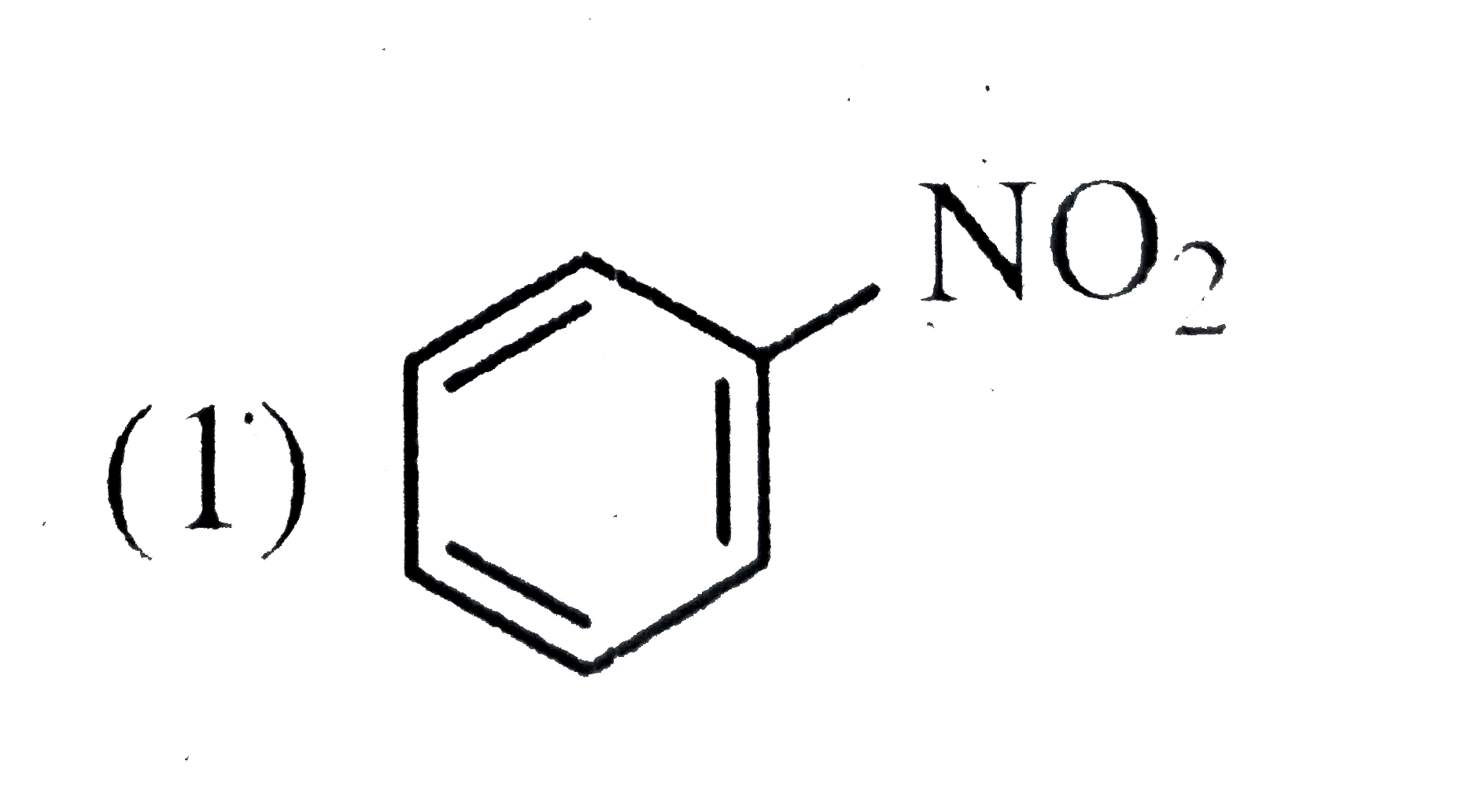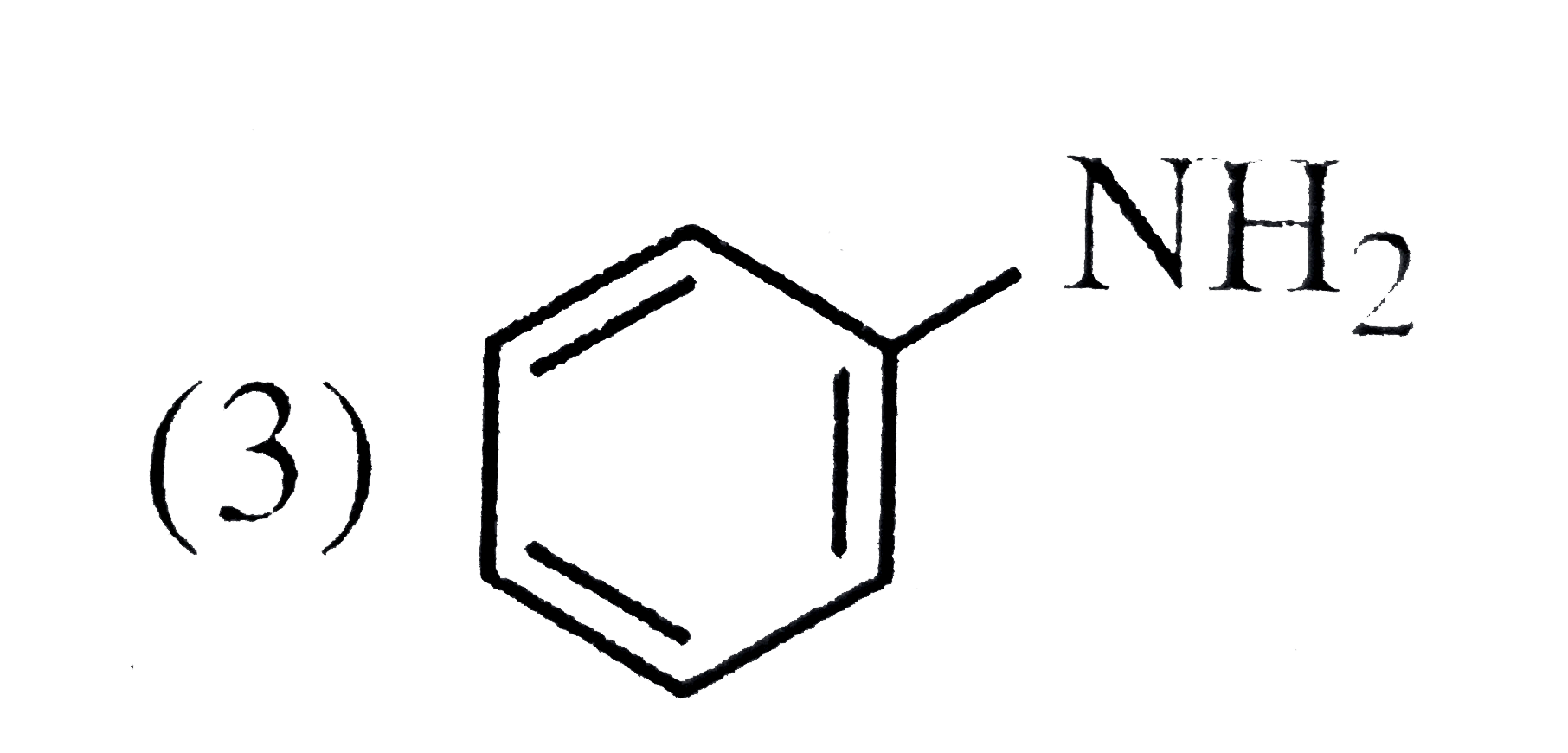In which of the following, ring has maxium eΘdensity




To determine which of the given compounds has the maximum electron density in the ring, we need to analyze the effects of substituents on the benzene ring in each compound. Here’s a step-by-step breakdown of the reasoning:
Step 1: Analyze the First Compound
- The first compound has an aniline group (an amino group attached to a benzene ring).
- The amino group has a -M (minus mesomeric) effect due to its ability to withdraw electrons through resonance.
- This results in a decrease in electron density in the benzene ring.
Hint: Look for groups that withdraw electrons from the ring; they will decrease electron density.
Step 2: Analyze the Second Compound
- The second compound has a substituent that is an alkyl group (like -CH3) attached to an oxygen atom with a negative charge.
- Alkyl groups exhibit a +I (plus inductive) effect, which means they donate electron density.
- This leads to an increase in electron density in the benzene ring compared to the first compound.
Hint: Identify groups that donate electrons to the ring; they will increase electron density.
Step 3: Analyze the Third Compound
- The third compound has a substituent with a lone pair of electrons that can participate in resonance with the benzene ring.
- This lone pair can donate electrons to the ring, exhibiting a +M (plus mesomeric) effect.
- This effect significantly increases the electron density in the benzene ring.
Hint: Look for lone pairs that can participate in resonance; they usually increase electron density.
Step 4: Analyze the Fourth Compound
- The fourth compound also has a lone pair that can participate in resonance, similar to the third compound.
- However, this lone pair is on an oxygen atom, which is more electronegative than nitrogen.
- Due to its higher electronegativity, oxygen has a lesser tendency to donate its lone pair compared to nitrogen, resulting in lower electron density than in the third compound.
Hint: Consider the electronegativity of atoms; more electronegative atoms are less likely to donate electron density.
Conclusion
After analyzing all four compounds:
- The first compound has the least electron density due to the -M effect.
- The second compound has increased electron density due to the +I effect.
- The third compound has the highest electron density due to the strong +M effect from the lone pair.
- The fourth compound has lower electron density than the third due to the electronegativity of oxygen.
Thus, the compound with the maximum electron density in the ring is the third compound.
Final Answer: The third compound has the maximum electron density in the ring.
- The first compound has an aniline group (an amino group attached to a benzene ring).
- The amino group has a -M (minus mesomeric) effect due to its ability to withdraw electrons through resonance.
- This results in a decrease in electron density in the benzene ring.
- The second compound has a substituent that is an alkyl group (like -CH3) attached to an oxygen atom with a negative charge.
- Alkyl groups exhibit a +I (plus inductive) effect, which means they donate electron density.
- This leads to an increase in electron density in the benzene ring compared to the first compound.
- The third compound has a substituent with a lone pair of electrons that can participate in resonance with the benzene ring.
- This lone pair can donate electrons to the ring, exhibiting a +M (plus mesomeric) effect.
- This effect significantly increases the electron density in the benzene ring.
- The fourth compound also has a lone pair that can participate in resonance, similar to the third compound.
- However, this lone pair is on an oxygen atom, which is more electronegative than nitrogen.
- Due to its higher electronegativity, oxygen has a lesser tendency to donate its lone pair compared to nitrogen, resulting in lower electron density than in the third compound.
After analyzing all four compounds:
- The first compound has the least electron density due to the -M effect.
- The second compound has increased electron density due to the +I effect.
- The third compound has the highest electron density due to the strong +M effect from the lone pair.
- The fourth compound has lower electron density than the third due to the electronegativity of oxygen.
Topper's Solved these Questions
Similar Questions
Knowledge Check
In which of the following molecules, π− electron density in ring is minimum ?
A B
B C
C D
D
In which of the following molecules π−electron density in ring is maximum?
A B
B C
C D
D
Which of the following rings is highly strained ?
A B
B C
C D
D
In which of the following cyclic ring is a parent chain :
View SolutionIn which of the following cyclic ring is a parent chain :
View SolutionWhich of the following gases has the highest density under standard conditions?
View SolutionWhich of the following benzene ring has greater electron density than Toulene
View SolutionWhich of the following gives the maxium number of isomers?
View Solution
